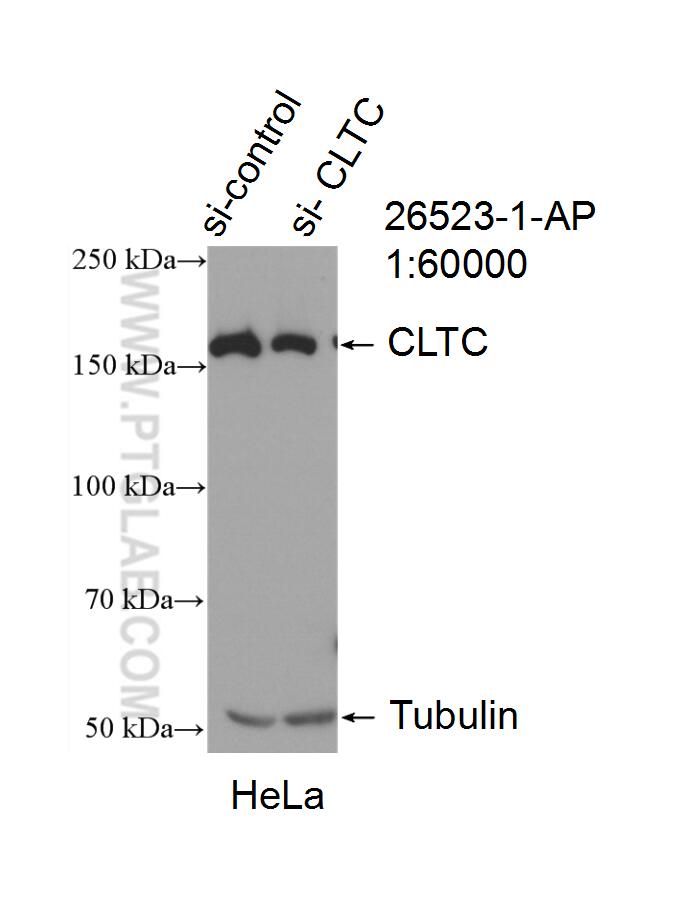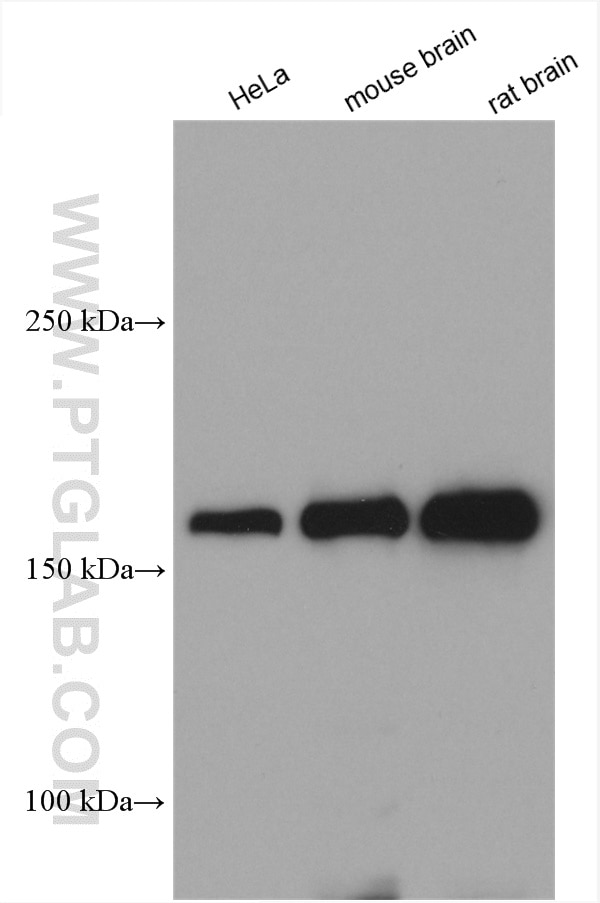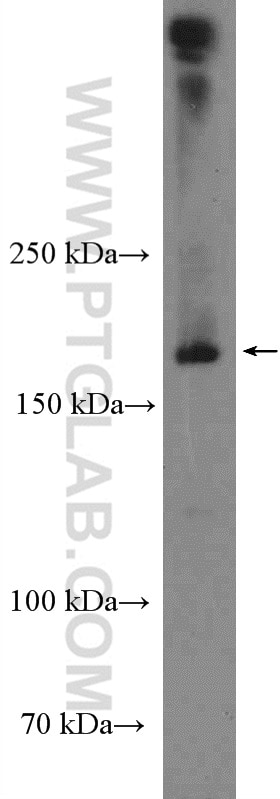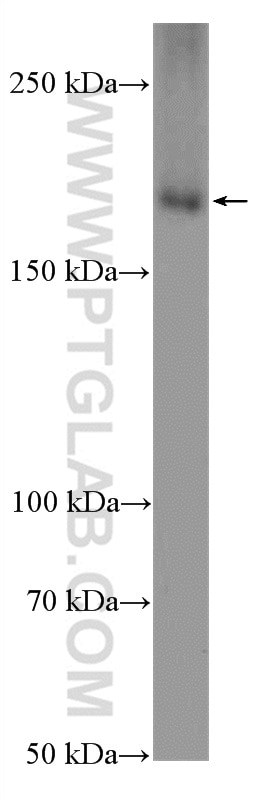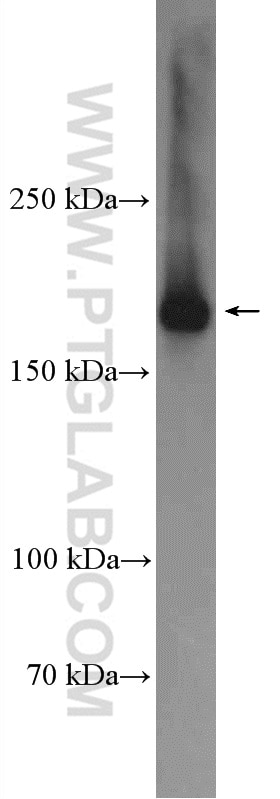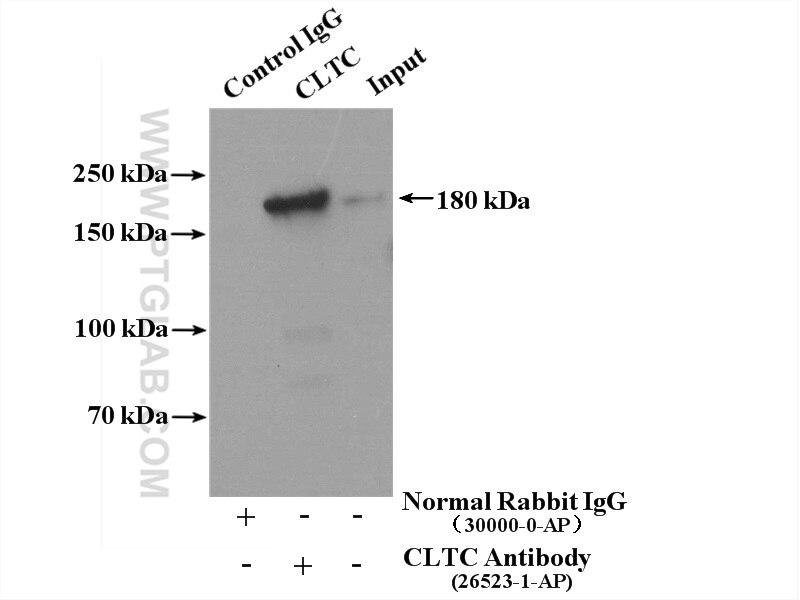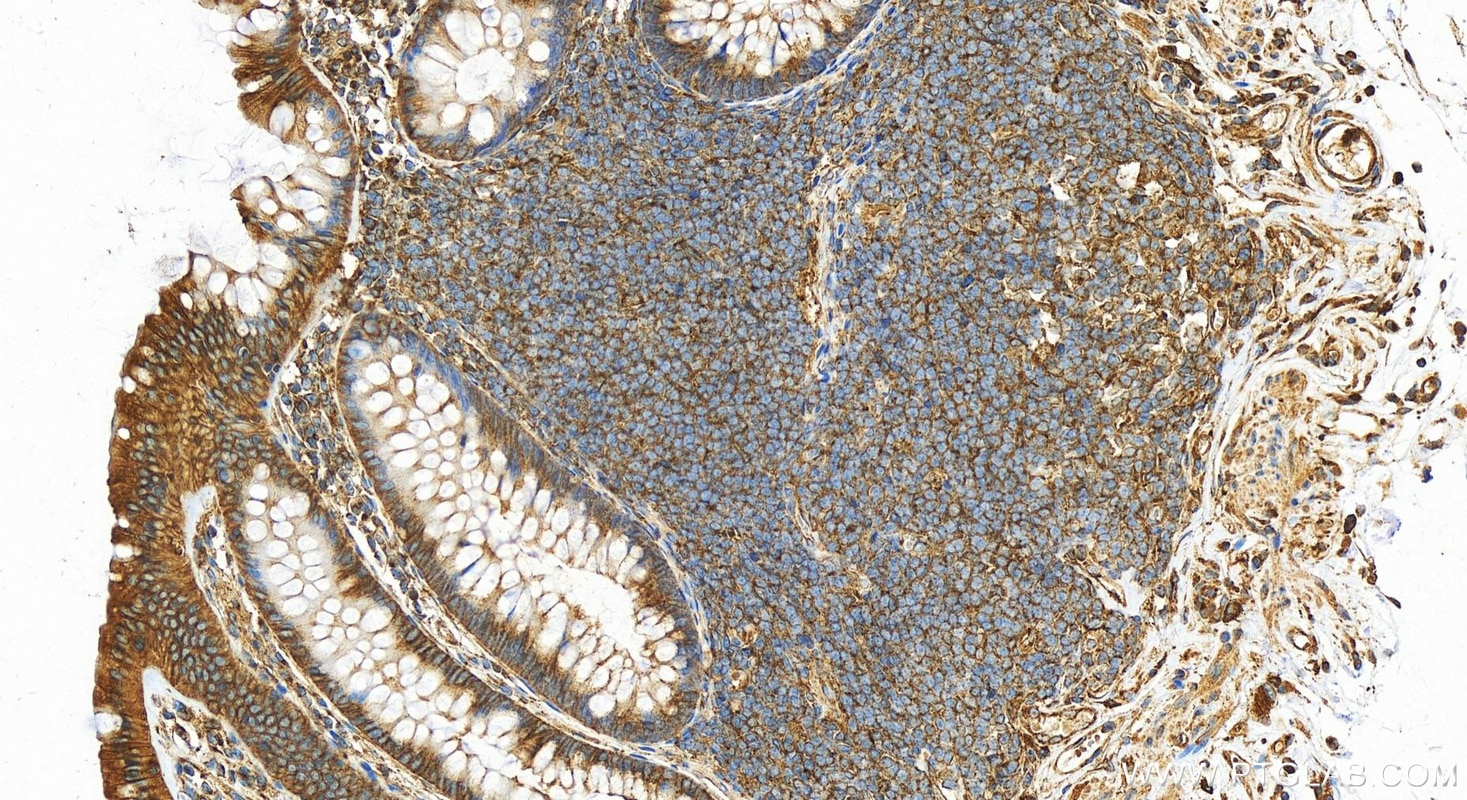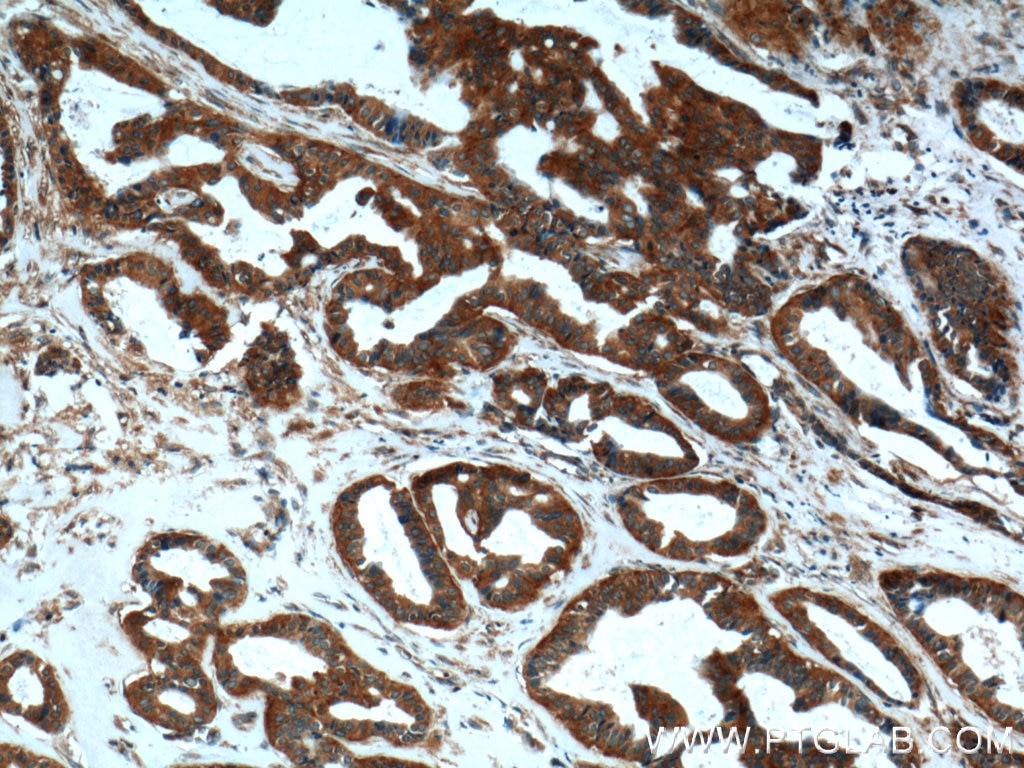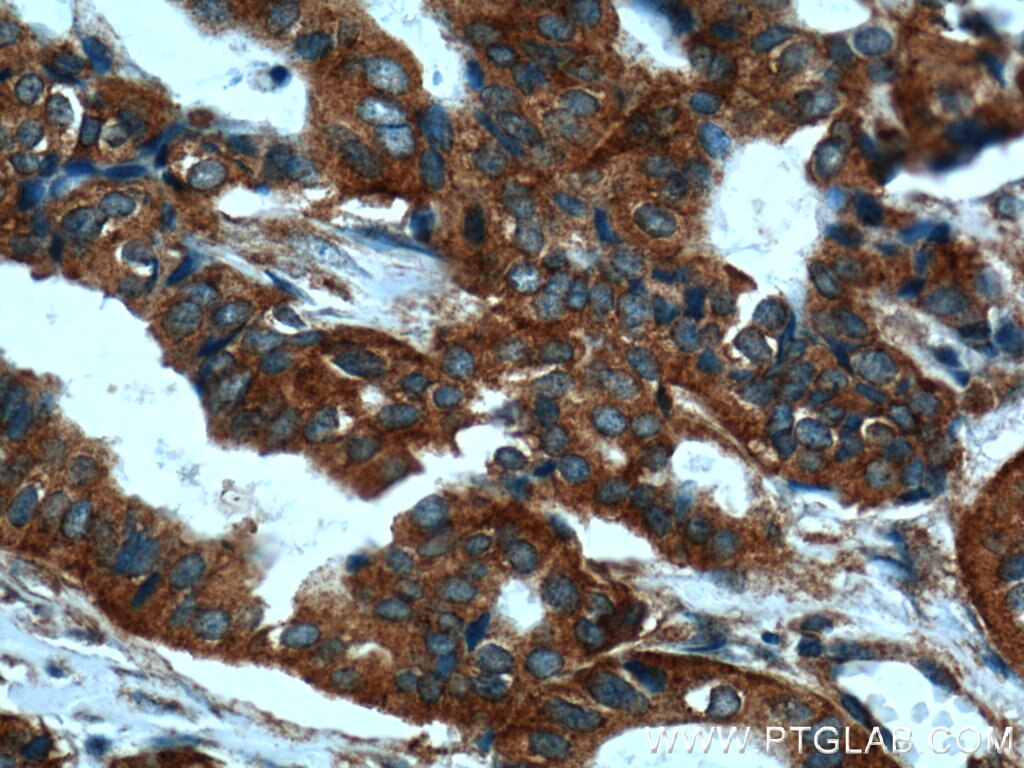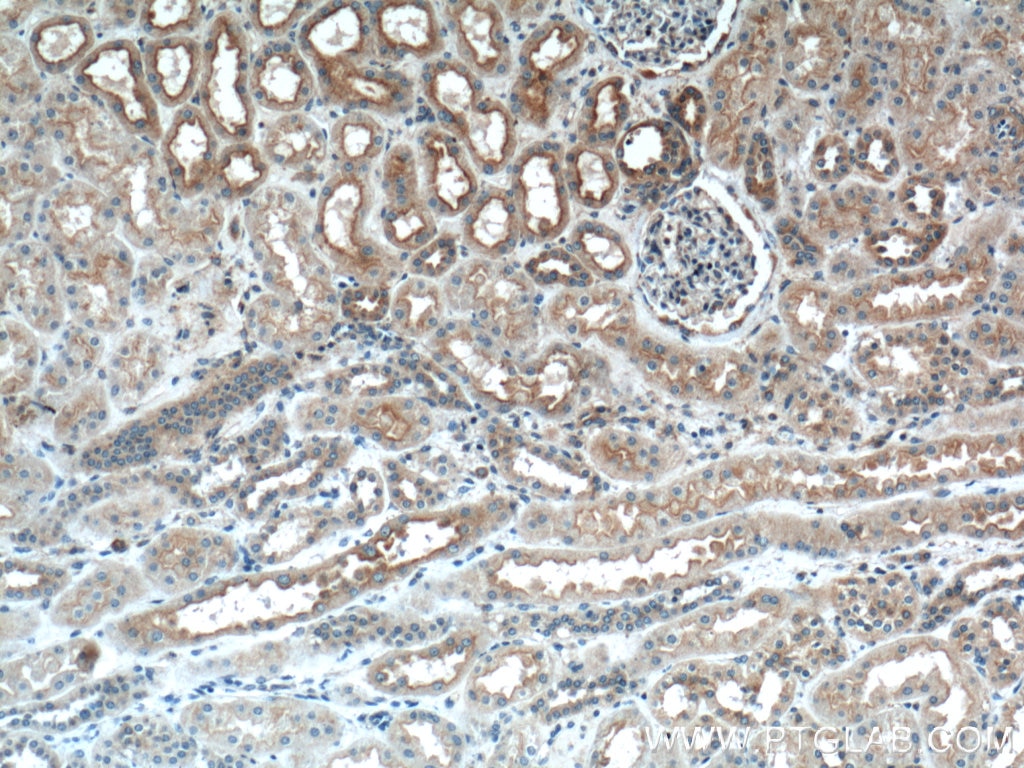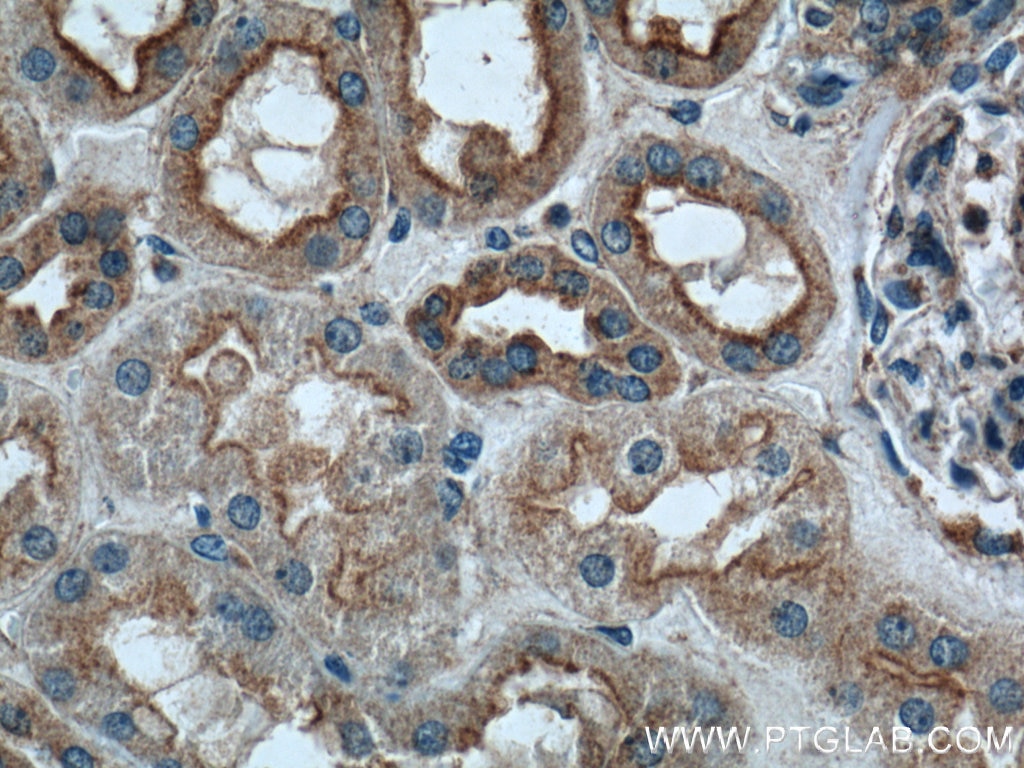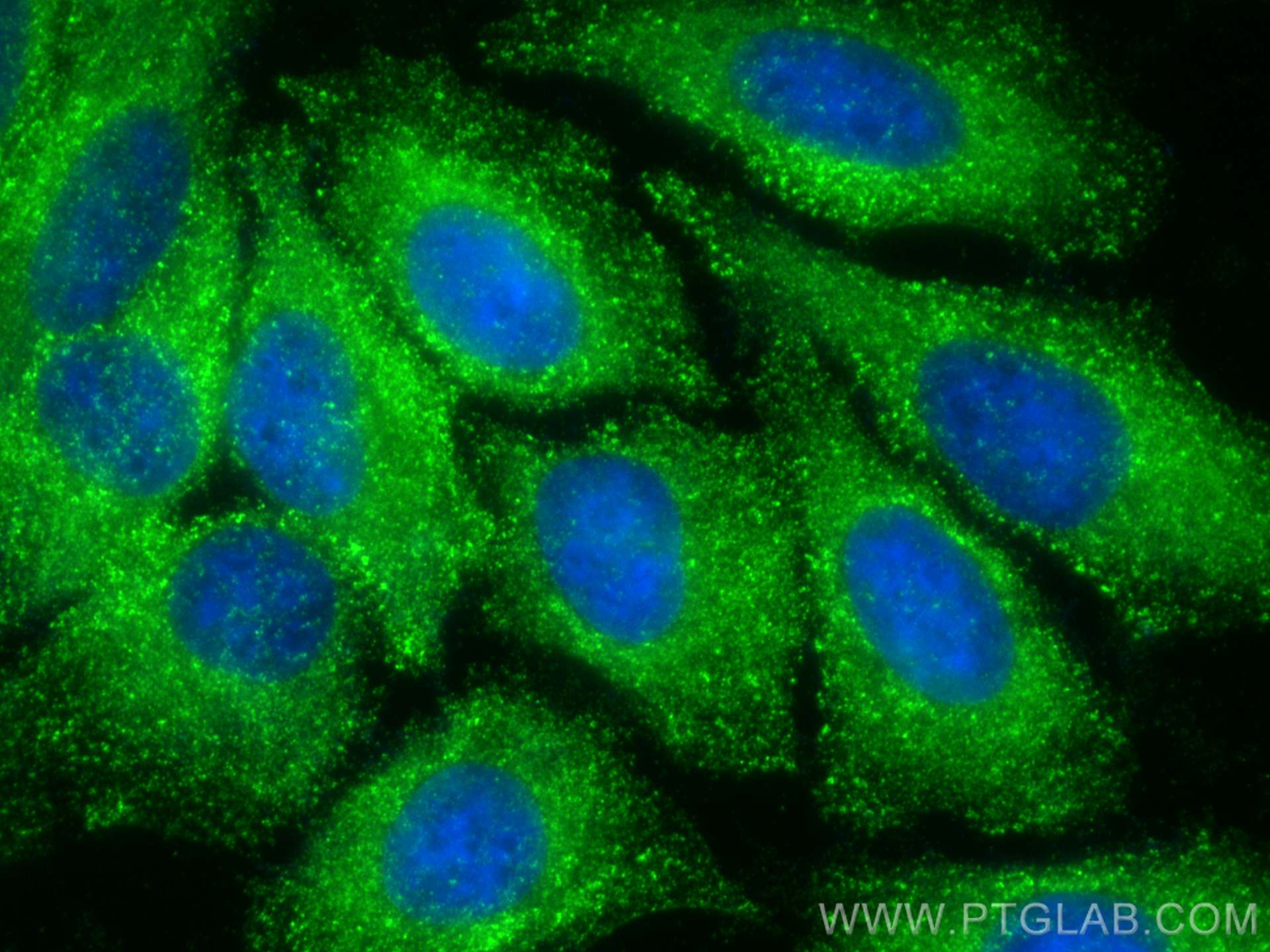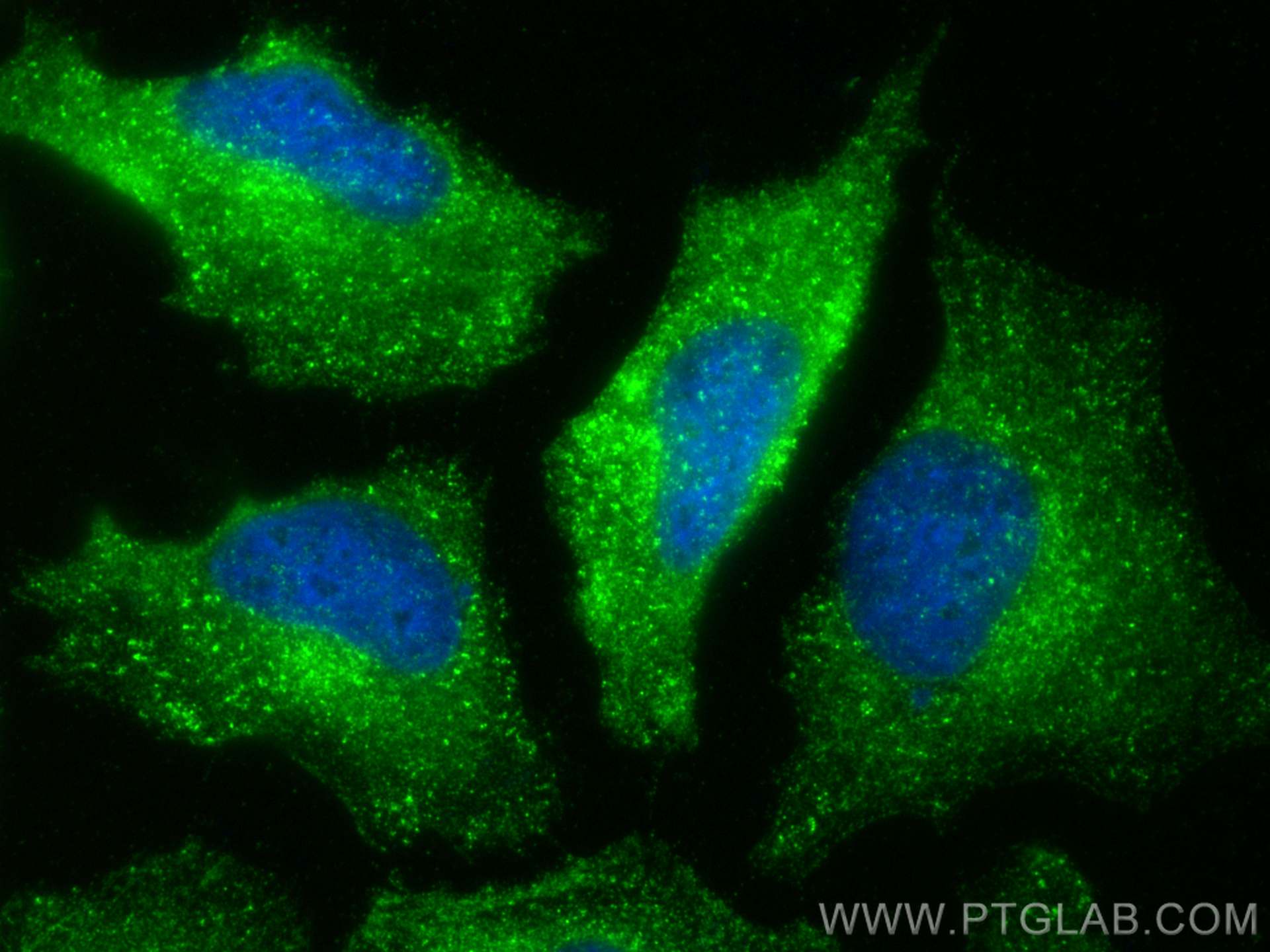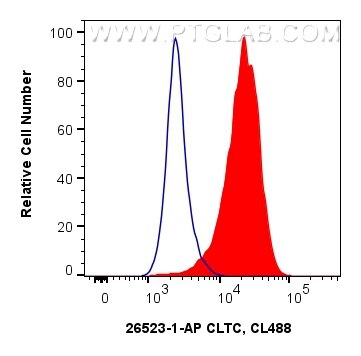- Featured Product
- KD/KO Validated
CLTC Polyklonaler Antikörper
CLTC Polyklonal Antikörper für WB, IHC, IF/ICC, FC (Intra), IP, ELISA
Wirt / Isotyp
Kaninchen / IgG
Getestete Reaktivität
Hausschwein, human, Maus, Ratte und mehr (1)
Anwendung
WB, IHC, IF/ICC, FC (Intra), IP, CoIP, ELISA
Konjugation
Unkonjugiert
Kat-Nr. : 26523-1-AP
Synonyme
Geprüfte Anwendungen
| Erfolgreiche Detektion in WB | HeLa-Zellen, HL-60-Zellen, Maushirngewebe, Hausschwein-Hirngewebe, Raji-Zellen, Rattenhirngewebe |
| Erfolgreiche IP | HeLa-Zellen |
| Erfolgreiche Detektion in IHC | humanes Kolongewebe, humanes Mammakarzinomgewebe, humanes Nierengewebe Hinweis: Antigendemaskierung mit TE-Puffer pH 9,0 empfohlen. (*) Wahlweise kann die Antigendemaskierung auch mit Citratpuffer pH 6,0 erfolgen. |
| Erfolgreiche Detektion in IF/ICC | HepG2-Zellen, HeLa-Zellen |
| Erfolgreiche Detektion in FC (Intra) | HeLa-Zellen |
Empfohlene Verdünnung
| Anwendung | Verdünnung |
|---|---|
| Western Blot (WB) | WB : 1:2000-1:10000 |
| Immunpräzipitation (IP) | IP : 0.5-4.0 ug for 1.0-3.0 mg of total protein lysate |
| Immunhistochemie (IHC) | IHC : 1:500-1:2000 |
| Immunfluoreszenz (IF)/ICC | IF/ICC : 1:250-1:1000 |
| Durchflusszytometrie (FC) (INTRA) | FC (INTRA) : 0.40 ug per 10^6 cells in a 100 µl suspension |
| It is recommended that this reagent should be titrated in each testing system to obtain optimal results. | |
| Sample-dependent, check data in validation data gallery | |
Veröffentlichte Anwendungen
| KD/KO | See 1 publications below |
| WB | See 6 publications below |
| IF | See 6 publications below |
| CoIP | See 2 publications below |
Produktinformation
26523-1-AP bindet in WB, IHC, IF/ICC, FC (Intra), IP, CoIP, ELISA CLTC und zeigt Reaktivität mit Hausschwein, human, Maus, Ratten
| Getestete Reaktivität | Hausschwein, human, Maus, Ratte |
| In Publikationen genannte Reaktivität | human, Maus, Rind |
| Wirt / Isotyp | Kaninchen / IgG |
| Klonalität | Polyklonal |
| Typ | Antikörper |
| Immunogen | CLTC fusion protein Ag25041 |
| Vollständiger Name | clathrin, heavy chain (Hc) |
| Berechnetes Molekulargewicht | 192 kDa |
| Beobachtetes Molekulargewicht | 180 kDa |
| GenBank-Zugangsnummer | BC054489 |
| Gene symbol | CLTC |
| Gene ID (NCBI) | 1213 |
| Konjugation | Unkonjugiert |
| Form | Liquid |
| Reinigungsmethode | Antigen-Affinitätsreinigung |
| Lagerungspuffer | PBS with 0.02% sodium azide and 50% glycerol |
| Lagerungsbedingungen | Bei -20°C lagern. Nach dem Versand ein Jahr lang stabil Aliquotieren ist bei -20oC Lagerung nicht notwendig. 20ul Größen enthalten 0,1% BSA. |
Hintergrundinformationen
Clathrin is the major protein of the polyhedral coat of coated pits and vesicles which entrap specific macromolecules during receptor-mediated endocytosis. The clathrin molecule has a triskelion shape. Each clathrin triskelion is composed of three identical heavy chains (CLTC) (160-190 kDa) and three light chains of two types, LCA (CLTA) and LCB (CLTB) (30-40 kDa). The heavy chain provides the structural backbone of the clathrin lattice. (PMID: 9133677)
Protokolle
| PRODUKTSPEZIFISCHE PROTOKOLLE | |
|---|---|
| WB protocol for CLTC antibody 26523-1-AP | Protokoll herunterladen |
| IHC protocol for CLTC antibody 26523-1-AP | Protokoll herunterladenl |
| IF protocol for CLTC antibody 26523-1-AP | Protokoll herunterladen |
| IP protocol for CLTC antibody 26523-1-AP | Protokoll herunterladen |
| FC protocol for CLTC antibody 26523-1-AP | Download protocol |
| STANDARD-PROTOKOLLE | |
|---|---|
| Klicken Sie hier, um unsere Standardprotokolle anzuzeigen |
Publikationen
| Species | Application | Title |
|---|---|---|
Emerg Microbes Infect CD1d facilitates African swine fever virus entry into the host cells via clathrin-mediated endocytosis | ||
Autophagy AP2M1 mediates autophagy-induced CLDN2 (claudin 2) degradation through endocytosis and interaction with LC3 and reduces intestinal epithelial tight junction permeability. | ||
Br J Pharmacol A glycine-serine-alanine-rich peptide ameliorates Alzheimer-type neurodegeneration | ||
Aging (Albany NY) The interaction protein of SORBS2 in myocardial tissue to find out the pathogenic mechanism of LVNC disease. | ||
Vet Microbiol Invasion of Mycoplasma bovis into bovine synovial cells utilizing the clathrin-dependent endocytosis pathway.
| ||
FASEB J A genome-wide transposon mutagenesis screening identifies LppB as a key factor associated with Mycoplasma bovis colonization and invasion into host cells |
